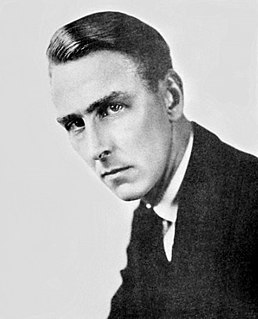Related Research Articles

From the Manger to the Cross or Jesus of Nazareth is a 1912 American drama film directed by Sidney Olcott, written by Gene Gauntier, and stars Robert Henderson-Bland as Jesus of Nazareth. Filmed on location in Egypt and in Palestine, it tells the story of Jesus' life, interspersed with verses from The Bible.
William Herbert Lee was an English songwriter. He wrote for music hall and the musical stage, often in partnership with R. P. Weston.
Louis Stone known professionally as Lew Stone was a British bandleader and arranger of the British dance band era, and was well known in Britain during the 1930s. He was known as a skillful, innovative and imaginative musical arranger.

Jamboree, known as Disc Jockey Jamboree in the United Kingdom, is a 1957 American rock and roll film directed by Roy Lockwood. Its story is about a boy and girl, Pete Porter and Honey Wynn, who become overnight sensations as a romantic singing duo who run into trouble when their squabbling managers, try to turn them into solo acts. Against this backdrop in cameo performances appear some of the biggest names of rock and roll in the 1950s lip-syncing to their recordings.
John Wesley Vivian Payne was a British dance music bandleader who established his reputation during the British dance band era of the 1930s.

Percy Marmont was an English film actor.
David Livingstone is a 1936 British historical adventure film directed by James A. FitzPatrick and starring Percy Marmont, Marian Spencer and James Carew. It portrays the expedition of the British explorer David Livingstone to Africa to discover the source of the Nile, his disappearance, and the expedition to find him led by Stanley. The film was made at Shepperton Studios for distribution by MGM.
Land Without Music is a 1936 British comedy film directed by Walter Forde and starring Richard Tauber, Diana Napier and Jimmy Durante. It was made at Denham Studios. The film was one of a number of operetta films made in Britain during the decade.
The White Lilac is a 1935 British mystery film directed by Albert Parker and starring Basil Sydney, Judy Gunn, Claude Dampier and Percy Marmont. It is based upon the play of the same name by Ladislas Fodor. It was made at Wembley Studios as a quota quickie by the British subsidiary of Fox Film.
Her Imaginary Lover is a 1933 British comedy film directed by George King and starring Laura La Plante and Percy Marmont. It was produced and distributed by Warner Brothers and shot at the company's Teddington Studios as a quota quickie.
The Written Law is a 1931 British drama film directed by Reginald Fogwell and starring Madeleine Carroll, Percy Marmont and Henry Hewitt. It was shot at Elstree Studios. The screenplay concerns a man who is cured of blindness but conceals his recovery from his wife.
The Loves of Ariane is a 1931 British-German drama film directed by Paul Czinner starring Elisabeth Bergner, Charles Carson and Percy Marmont. Shot in Germany, it was an English-language version of the 1931 film Ariane. It was based on the 1920 novel Ariane, jeune fille russe by Claude Anet. The screenplay concerns a young woman studying at University who falls in love with Don Juan. A German version of the film, Ariane was also made.
Sir or Madam is a 1928 British-German silent comedy film directed by Carl Boese and starring Margot Armand, Percy Marmont and Ossi Oswalda. It was based on the 1923 novel Sir or Madame by Berta Ruck and shot at Elstree Studios near London. The film was a co-production between Germany and Britain, with separate versions released in the countries. In Britain it was not released until February 1930.

Three Men and a Girl is a lost 1919 American romantic comedy film directed by Marshall Neilan and starring Marguerite Clark. It was produced by Famous Players-Lasky and distributed by Paramount Pictures. The film is based on the off-Broadway play The Three Bears by Edward Childs Carpenter.
This is a summary of 1934 in music in the United Kingdom.
The Silver Greyhound is a 1932 British thriller film directed by William C. McGann and starring Percy Marmont, Anthony Bushell and Janice Adair. The film is a quota quickie, made at Teddington Studios by the British subsidiary of the Hollywood company Warner Brothers.
Blind Spot is a 1932 British crime film directed by John Daumery and starring Percy Marmont, Muriel Angelus and Warwick Ward. It was made at Teddington Studios by the British subsidiary of Warner Brothers.
Debroy Somers was a British twentieth-century big band bandleader.
The Squeaker is a 1930 British mystery crime film directed by Edgar Wallace and starring Percy Marmont, Anne Grey and Gordon Harker.
Cross Roads is a 1930 British drama film directed by Reginald Fogwell and starring Percy Marmont, Anne Grey and Betty Faire. It was shot at Welwyn Studios as a quota quickie. It is a melodrama about a wife killing her unfaithful husband.